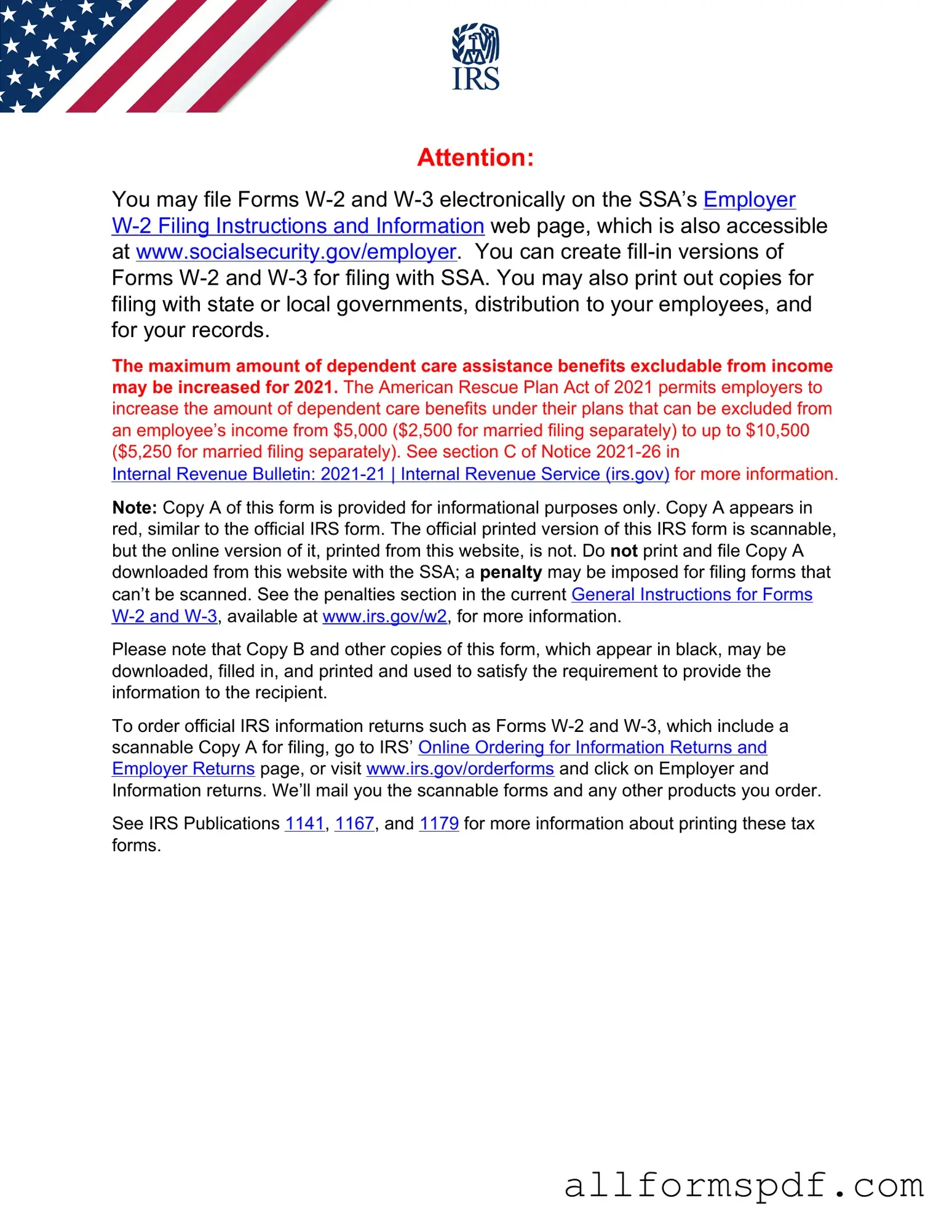Filling out the IRS W-2 form can be a straightforward process, but many people make common mistakes that can lead to complications. One frequent error is providing incorrect personal information. This includes misspellings of names or incorrect Social Security numbers. Such mistakes can cause delays in processing and may affect tax filings.
Another common mistake is failing to check the box for the appropriate filing status. The W-2 form includes options for different types of income, and selecting the wrong one can lead to inaccurate tax calculations. This can result in either owing more taxes than necessary or receiving a smaller refund.
Many individuals also overlook the importance of accurately reporting wages. It’s crucial to ensure that the wages reported on the W-2 match the amounts on your pay stubs. Discrepancies can raise red flags with the IRS and lead to audits.
Additionally, some people forget to account for pre-tax deductions. Items like health insurance premiums or retirement contributions should be deducted before calculating taxable income. Failing to do so can lead to an inflated tax bill.
Another mistake involves misreporting state and local taxes. Each state has its own requirements, and not accurately reflecting these can complicate state tax filings. It’s essential to double-check these figures to avoid issues later on.
Some individuals neglect to review the form for errors before submitting it. A simple oversight can lead to significant problems down the line. Always take the time to review the completed W-2 for accuracy.
Not keeping copies of the W-2 form is another mistake that can have serious consequences. Retaining a copy is important for personal records and may be necessary if questions arise regarding your tax filings.
Finally, many people fail to file their W-2 forms on time. Missing deadlines can result in penalties and interest charges. It’s vital to be aware of filing dates and ensure that everything is submitted promptly.
